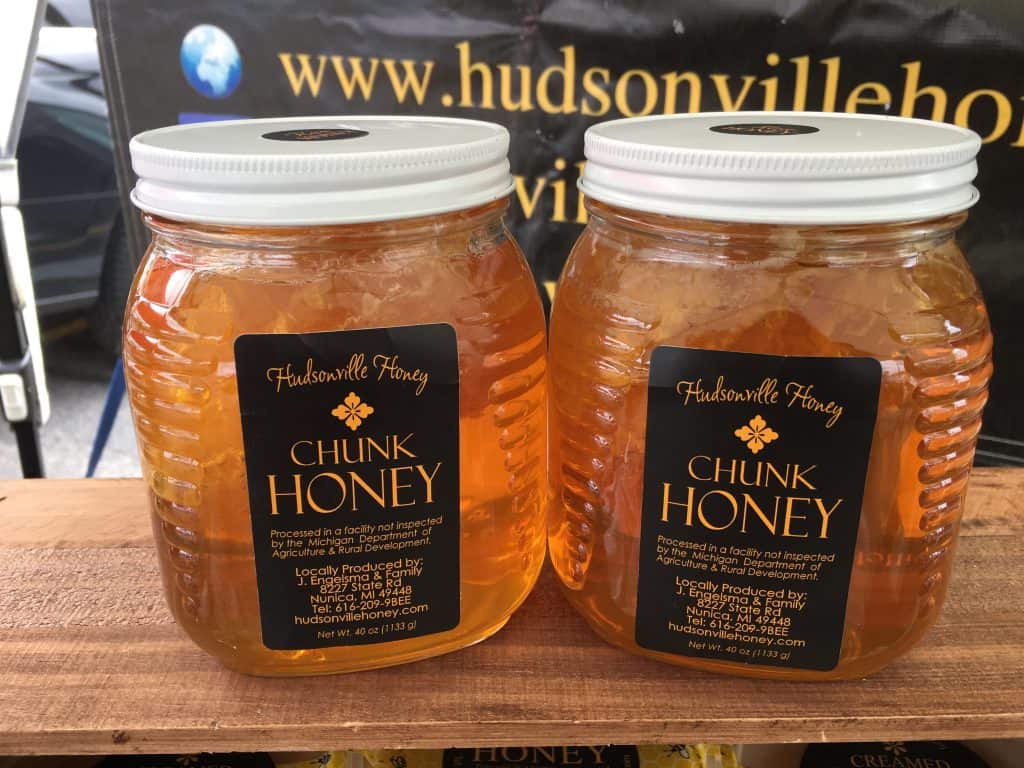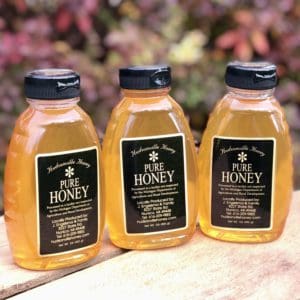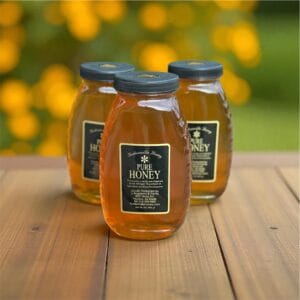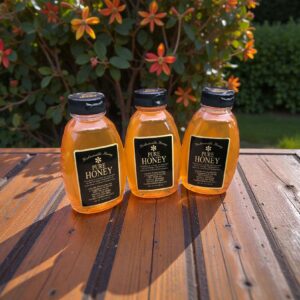A while back we wrote an article in which we tried to clear up some of the confusion around the term “raw honey”. If you want to get really technical, perhaps the only correct definition of the term is honey still in the comb, or simply “comb honey”. Every year, we produced a limited amount of comb honey which we make available to our local customers. Comb honey is just that – honey that is still in the beeswax comb just as the bees have left it.
When we sell comb honey at various farm markets and craft shows, its interesting how many older people know exactly what is, while younger folks have simply never heard of it before! Perhaps that is partly because its a bit harder for beekeepers (and the bees!) to produce, and most commercial beekeepers don’t find it economical to produce. Years ago, it was far most common, which explains why older folk tend to be aware of it.
Most of the honey we sell is extract or liquid honey. We place the combs in a machine (an extractor) which uses centrifugal force to spin the honey out of the honey comb. Once the honey has been extracted it we can strain it, let it settle and then bottle it in convenient containers.
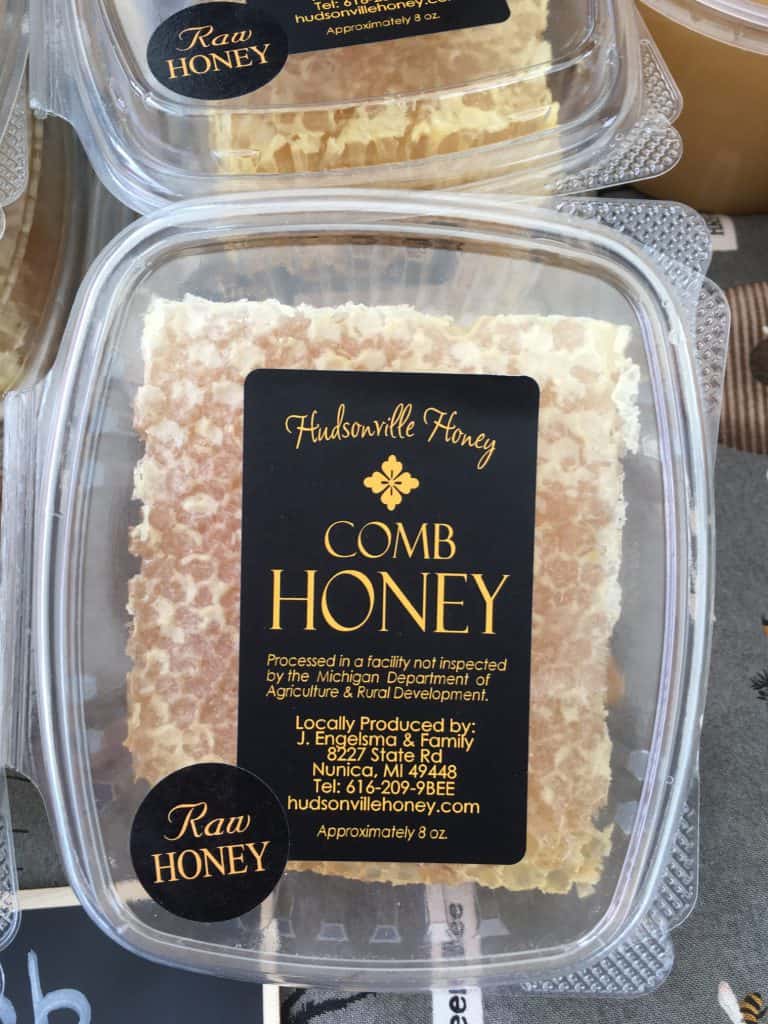
Comb honey is actually quite amazing. The beeswax comb itself is edible, and you simply consume the honey and beeswax together. You can spoon it into your tea, onto your cereal, or on a freshly baked warm dinner roll – honey and wax together! Try it for yourself and be prepared to be delighted!
We produce comb honey by introducing a special honey super with a thin surplus foundation in the frames. We mark these boxes so that when we encounter them during the harvest we set them aside and do not run them through the extractor. Instead, the frames are removed from the box and the combs cut into square sections, like the one shown in the photo above. The cut sections are allowed to drain the honey from the edges overnight and then packaged.
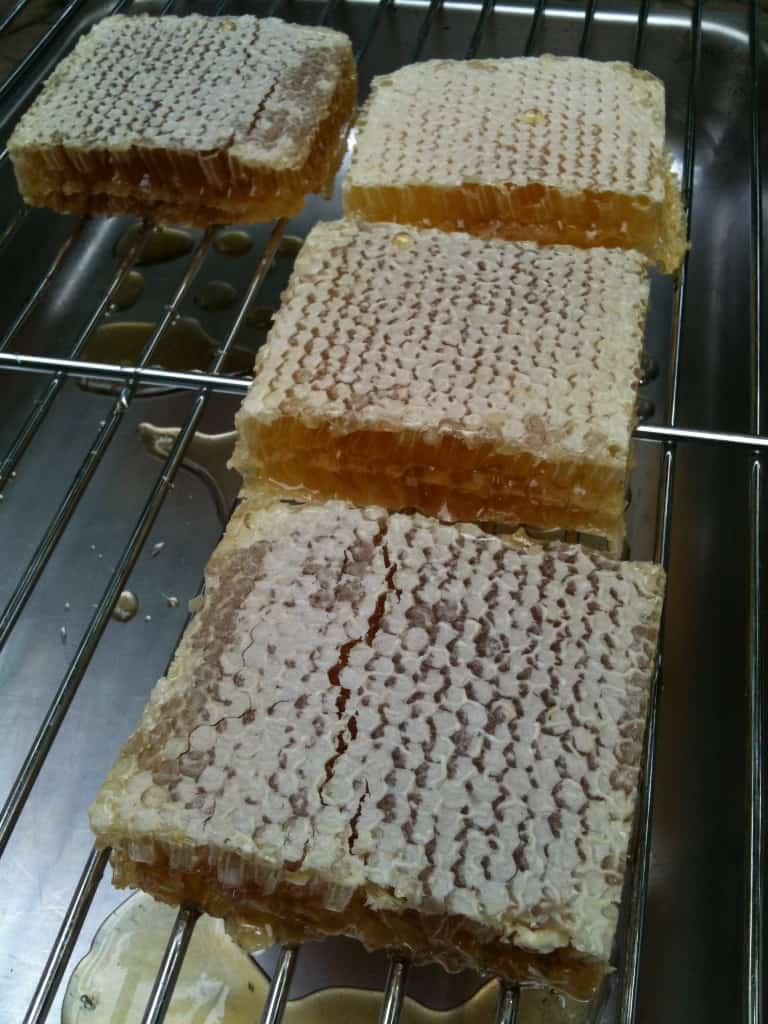
We also will take sections of comb honey and place them in wide mouth honey jars and fill the remaining space in the jar with extract honey. We call this “chunk honey”. This makes for a popular package for fans of truly “raw honey”.
